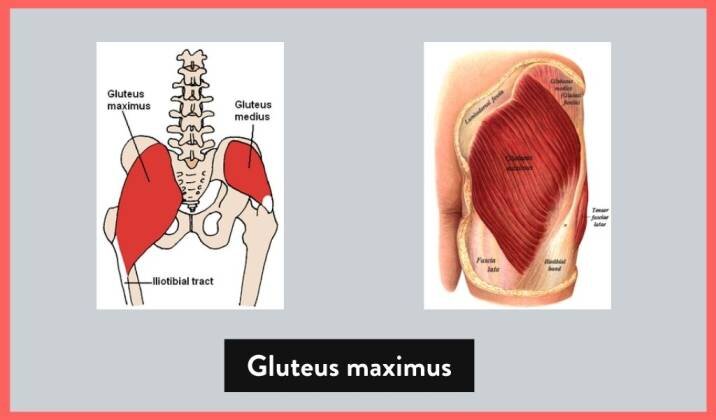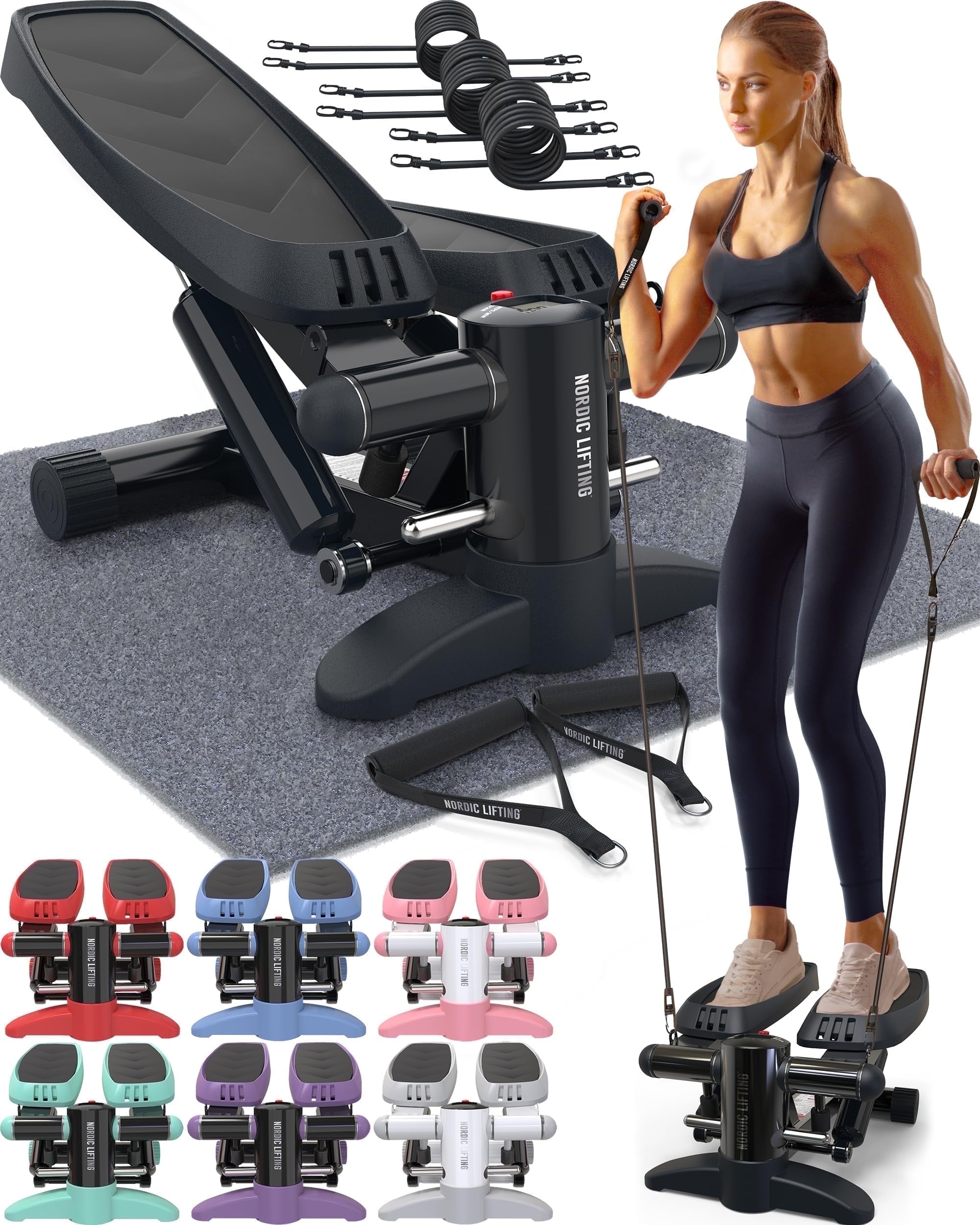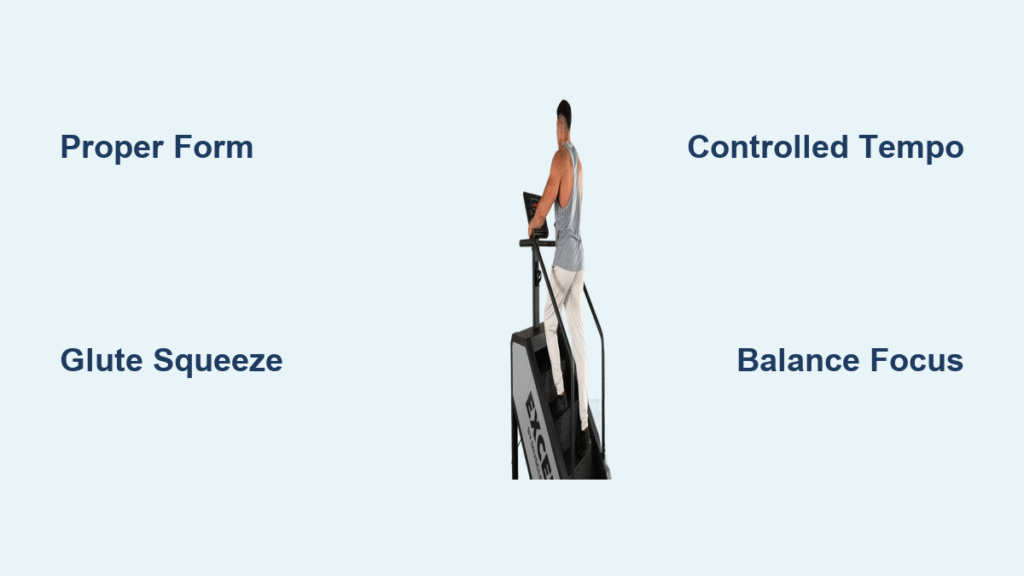You’re stepping on the stair climber, watching the calorie counter climb, but your glutes aren’t getting the sculpted shape you want. That’s because standard stair climbing primarily targets your quads while barely engaging your glutes. Stair climber kickbacks solve this problem by transforming your cardio session into a powerful glute-building workout. This advanced technique delivers the intense muscle contraction needed to develop the rounded, lifted appearance that traditional exercises often miss.
Most gym-goers waste valuable time on the stair climber using basic stepping patterns that don’t maximize glute engagement. By incorporating kickback movements, you’ll activate your gluteus maximus through its full range of motion against resistance. Whether you’ve been struggling to see glute results or you’re ready to take your lower body training to the next level, mastering this technique will deliver noticeable improvements in just weeks.
Why Your Standard Stair Climbing Isn’t Building Glutes
Conventional stair climbing keeps your feet firmly planted on the pedals throughout the motion, placing most of the workload on your quadriceps and calf muscles. This vertical stepping pattern creates minimal hip extension—the critical movement needed to fully engage your gluteus maximus. Without proper hip extension, your glutes remain under-stimulated regardless of how long you climb.
How Kickbacks Create Superior Glute Activation
When you perform kickbacks on the stair climber, you actively extend your leg backward at hip height during each step cycle. This single modification forces your glutes to work through a complete range of motion against resistance. The moment your heel drives back and up, your gluteus maximus fires intensely to create that powerful hip extension. Unlike standard climbing where your glutes only engage during the upward push, kickbacks add a second activation phase during the extension.
Machine Compatibility Guide
Rotary-style stair climbers like the StairMaster Gauntlet provide the smoothest motion for kickbacks due to their continuous circular movement pattern. Alternating pedal models still work but require more coordination to time your kickbacks properly. While some specialized machines include kickback attachments with resistance bands, these aren’t necessary—proper technique on standard equipment delivers excellent results.
Glute Activation Breakdown During Kickbacks

Stair climber kickbacks uniquely target your gluteus maximus through controlled hip extension against resistance. This movement creates maximum tension precisely when your glutes generate the most force—when your leg is extended behind your body. The continuous motion of the stair climber adds dynamic resistance that traditional kickback exercises lack.
Primary Muscle Engagement Sequence
Your gluteus maximus contracts powerfully when extending your leg backward against the machine’s resistance. Simultaneously, your gluteus medius stabilizes your pelvis to prevent hip drop during single-leg support. Your hamstrings assist during the backward kick motion, while erector spinae muscles maintain proper spinal alignment throughout the movement.
Balance Challenge Equals Better Results
The standing leg’s gluteus medius fires continuously to maintain stability as you alternate kickbacks. Your core muscles—including rectus abdominis and obliques—work overtime to prevent torso rotation. Even shoulder stabilizers engage as you maintain light contact with the handles for balance. This full-body integration creates functional strength that translates to better performance in other activities.
Perfect Your Kickback Technique in 4 Steps
Poor form turns stair climber kickbacks into a balance challenge with minimal muscle activation. Follow these precise technique steps to ensure every rep builds your glutes effectively.
Step-by-Step Execution Protocol
Start with proper setup: Set the machine to slow speed (levels 2-3), stand tall with shoulders over hips, and engage your core by pulling your belly button toward your spine. Position your feet in the center of the pedals with weight evenly distributed. Use only a light grip on the handles—your fingers should barely touch them for balance.
Execute the kickback: As the right pedal rises, drive your right heel back and up until your thigh parallels the ground. Focus on squeezing your glutes hard at the peak position before controlling the descent. Resist gravity as your leg returns to the pedal rather than dropping it. Immediately repeat with your left leg as its pedal rises.
Critical Form Corrections
If you’re arching your lower back during kickbacks, immediately reduce your range of motion and focus on maintaining a neutral spine. Many users rely on momentum instead of muscle control—slow down your movement and concentrate on the muscle contraction throughout the entire range. Gripping the handles too tightly shifts focus from your glutes to your upper body; practice using only fingertip contact for balance.
Strategic Kickback Programming for Visible Results
:upscale()/2024/03/19/900/n/1922729/tmp_gy3h4V_50cfdef0750e2a13_Color_PS24_02_F_H_20MinStairClimberWorkout_2550x3300_v2.jpg)
Randomly adding kickbacks to your stair climber sessions won’t build the glutes you want. Strategic programming based on your specific goals determines whether you’ll see significant improvements or simply burn extra calories.
Strength-Building Kickback Protocol
Perform 3-4 sets of 8-12 controlled kickbacks per leg at slower speeds (levels 3-4). Rest 45-60 seconds between sets to allow for partial recovery while maintaining metabolic stress. Increase difficulty by adding a weighted vest (5-10 lbs) or implementing slower tempos with 3-second eccentric phases. This protocol creates the mechanical tension necessary for significant muscle growth.
Beginner Kickback Progression Strategy
Start with just 2 sets of 10 kickbacks per leg during weeks 1-2 while focusing exclusively on perfect form. In weeks 3-4, increase to 3 sets and add 5 minutes to your total session time. By weeks 5-6, incorporate tempo variations like 2-second holds at peak contraction and extend your sessions to 15-20 minutes. This gradual progression prevents frustration while building the neuromuscular coordination required.
Safety First: Avoiding Common Kickback Injuries
Stair climber kickbacks place unique demands on your balance, hip mobility, and lower body stability. Ignoring safety considerations can lead to strains, imbalances, or more serious injuries that set back your progress.
Pre-Workout Safety Checklist
Always verify the pedals move smoothly without sticking before starting your kickbacks. Test the emergency stop mechanism and safety clip to ensure immediate shutdown capability. Confirm you have adequate clearance behind you for full leg extension—many users accidentally kick the machine housing. Wear supportive athletic shoes with flat, grippy soles designed for cross-training to maintain pedal contact.
Immediate Stop Signals
Stop your workout immediately if you experience sharp hip pain during leg extension, as this indicates potential strain or impingement. Lower back discomfort suggests inadequate core engagement or excessive arching. If your standing knee feels unstable or wobbly, your balance control needs improvement before continuing with kickbacks. Never push through these warning signs—address the underlying issue first.
Advanced Kickback Variations for Plateau-Busting Results
Once you’ve mastered basic kickbacks for 4-6 weeks, these advanced variations will continue challenging your glutes and prevent training plateaus that stall progress.
Resistance-Enhanced Kickbacks

Add ankle weights starting at 2-3 lbs per ankle, progressing to 5-8 lbs as your strength improves. For constant tension throughout the movement, attach an ankle strap to a low cable pulley positioned behind you. Looping a mini resistance band above your knees creates additional glute medius activation during each kickback.
Tempo and Range Intensification Techniques
Implement isometric holds by pausing 3 seconds at peak contraction every third repetition. Try pulsing repetitions by performing quarter-range pulses at the top position for 10-count burns during your final set. For greater hip extension, step back further on the pedal to increase your range of motion—only attempt this after mastering standard kickbacks.
Solving Common Kickback Performance Issues
Even experienced fitness enthusiasts encounter challenges when adding kickbacks to their stair climber routine. These targeted solutions address the most frequent problems.
Fixing Glute Activation Problems
If you’re feeling the movement primarily in your lower back instead of your glutes, reduce your range of motion and focus intensely on squeezing your glutes at the peak position. Many users struggle with quad dominance—slow your tempo dramatically and emphasize driving through your heel rather than your toes. To enhance the muscle pump, add 5-second isometric holds at peak contraction during your final set.
Overcoming Machine-Specific Challenges
If pedals stick during your kickback motion, report the issue to gym staff for lubrication of the machine tracks. Speed fluctuations often occur with pre-programmed workouts—switch to manual mode for consistent resistance. If handle height forces shoulder elevation, look for machines with adjustable handles or modify your grip to maintain relaxed shoulders.
Maximize Results with Proper Kickback Execution
Your stair climber sessions can transform from generic cardio to targeted glute sculpting with proper kickback technique. Focus on quality over quantity—ten perfect kickbacks with full glute engagement deliver better results than fifty sloppy repetitions. Start with slow speeds and perfect form, gradually increasing difficulty as your coordination and strength improve.
Consistent implementation of these techniques will produce visible improvements in glute shape and strength within 4-6 weeks. The unique combination of cardiovascular conditioning and targeted strength work creates the metabolic environment for optimal muscle development. Remember that proper recovery—adequate sleep, nutrition, and programmed deloads—is just as important as your workout execution for achieving the sculpted, lifted glutes you’re working toward.




